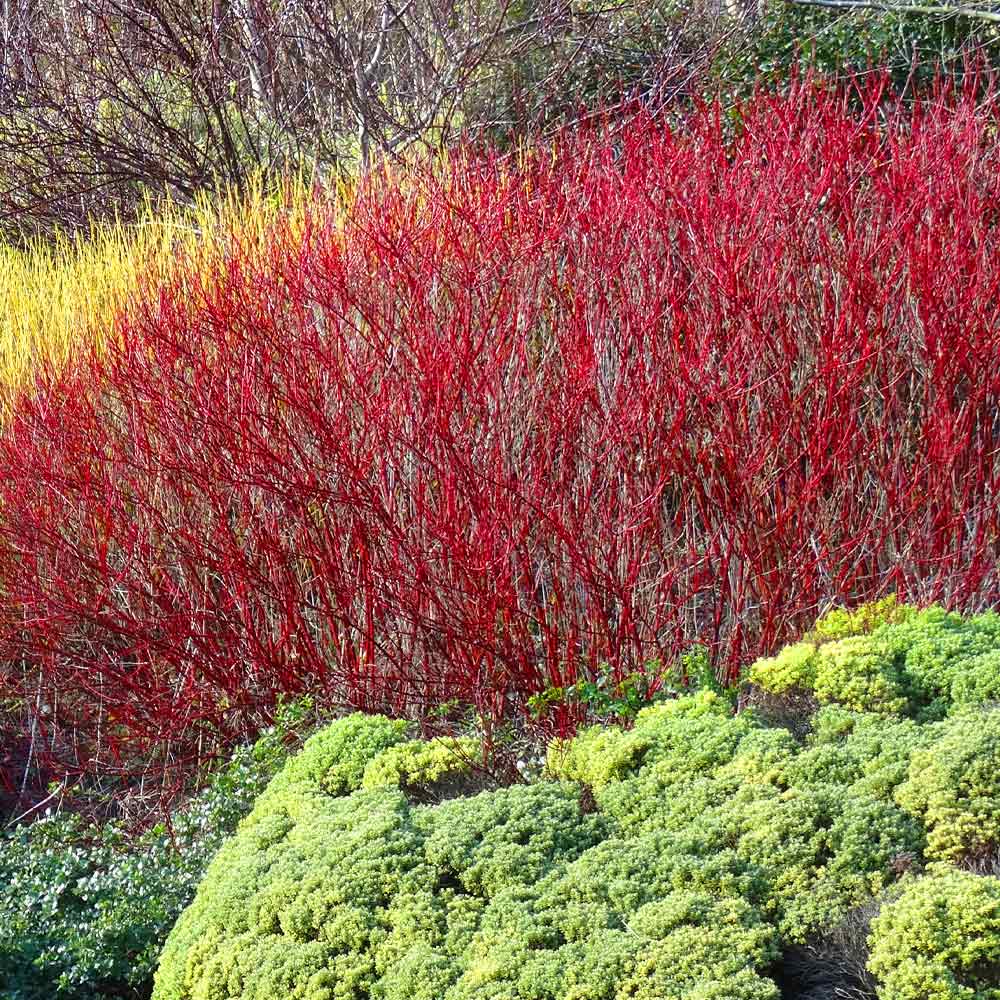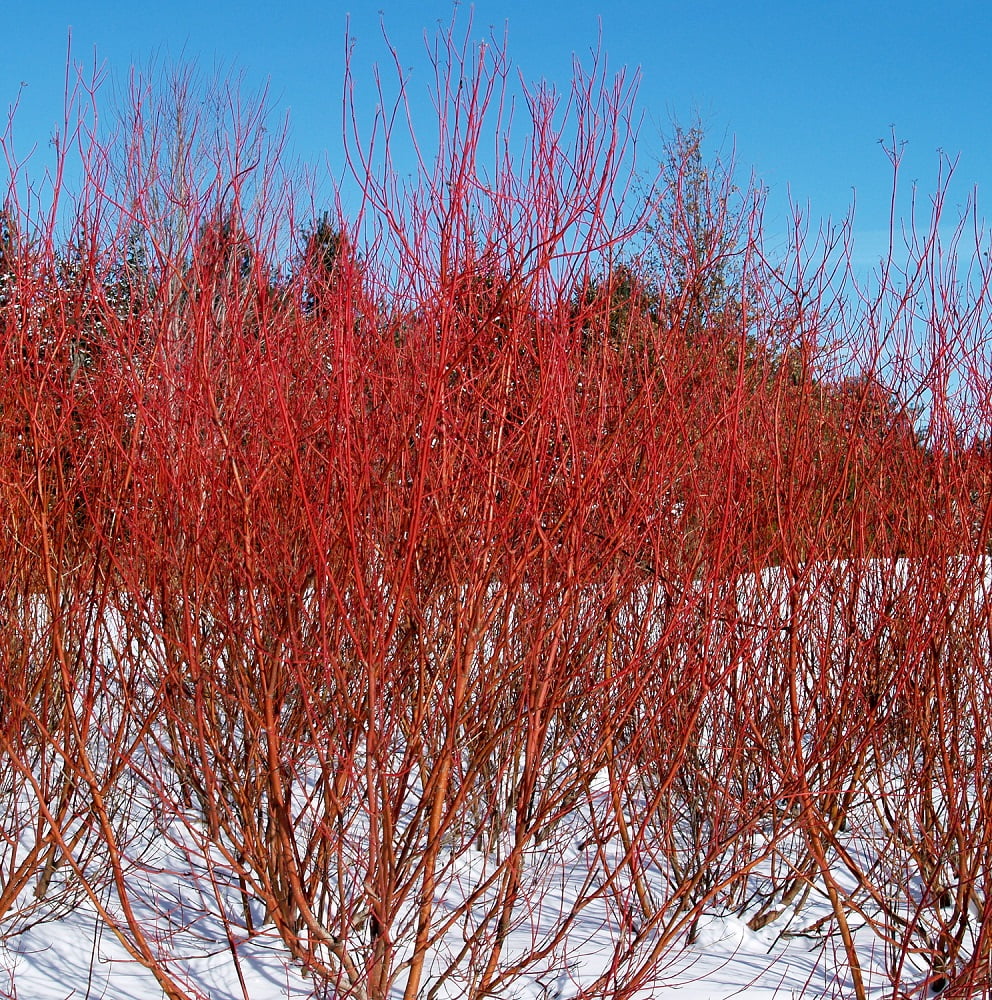

When they get much older than that, the color is obscured by brown, corky, bark-like cells. The bright red color on red-twig dogwoods is only seen on stems that are one and two years old. But there is one important thing you need to do to keep them looking their best, and that's regular (or at least, semi-regular) pruning. Thanks to its durability, red-twig dogwood firmly falls into the "easy care" category. While it may be unsightly, it won't harm the plant. If humidity is very high, leaf spot can develop. It will even grow in mud or standing water, so go ahead and plant it even in a difficult spot. Wet or dry, clay or sand, acidic or alkaline, red-twig dogwood can tolerate it all.

If you are growing them to attract spring azure butterflies to lay eggs, sun in spring and early summer is especially important.
#RED TWIG DOGWOOD SHRUB FULL#
These shrubs will grow in full sun or full shade, though the color and habit is best with at least some sun each day. This color fades during spring and summer, redevelops as autumn temperatures get cooler and the days get shorter, and are at their showiest during winter, when the plant is leafless. Red-twig dogwoods get their name from the bright red hue their stems develop in winter. It occurs naturally throughout a good portion of North America, and is often found growing along riverbanks, streams, drainage ditches, and ponds or lakes. It is not terribly heat tolerant, however, and is not recommended for areas warmer than about USDA zone 7, especially hot and humid climates. Other companion plants for the Yellow Twig Dogwood are Little Bluestem Grass and Black Mondo Grass.Red-twig dogwood, known botanically as Cornus sericea (and formerly known as Cornus stolonifera, a name still in popular use) is extremely cold tolerant, thriving even in frigid USDA zone 2. Anticipate Yellow Twig Dogwood Flowering Shrubs growing approximately 6 to 8 feet tall with a spread of 7 to 9 feet wide. Prune to thin out the branches in spring for better growth over the season which will result in better winter color. Pair the Y ellow Twig Dogwood with the Red Twig Dogwood for a striking winter setting of mulit-stemmed bushy dogwoods in a shrub hedge.

Though Yellow Dogwoods do grow in partial sun or light shade, the more sun they are exposed to, the more golden the winter branching color.Įarlier classification placed the Yellow Twig Dogwood as Cornus stolonifera 'Flaviramea', but more recent designations name it Cornus sericea 'Flaviramea'. As fall approaches the Yellow Twig, the bright green leaves fade to a golden color and then fall to the ground in late fall exposing the gorgeous golden bark branching.

Spring brings bright green leaves making a lovely backdrop for the white flowers that pop out becoming white fruit for birds and wildlife by mid summer.
#RED TWIG DOGWOOD SHRUB PLUS#
A flowering shrub that can handle moist to wet soil areas, the Yellow Twig is a great choice for wildlife gardens, woodland gardens, bird gardens, plus grows into a dense shrub hedge. This dogwood shrub is a North American native shrub that will bring interest to any garden setting. Golden branches will glow in your winter landscape with a shrub hedge or grouping of Yellow Twig Dogwoods.


 0 kommentar(er)
0 kommentar(er)
